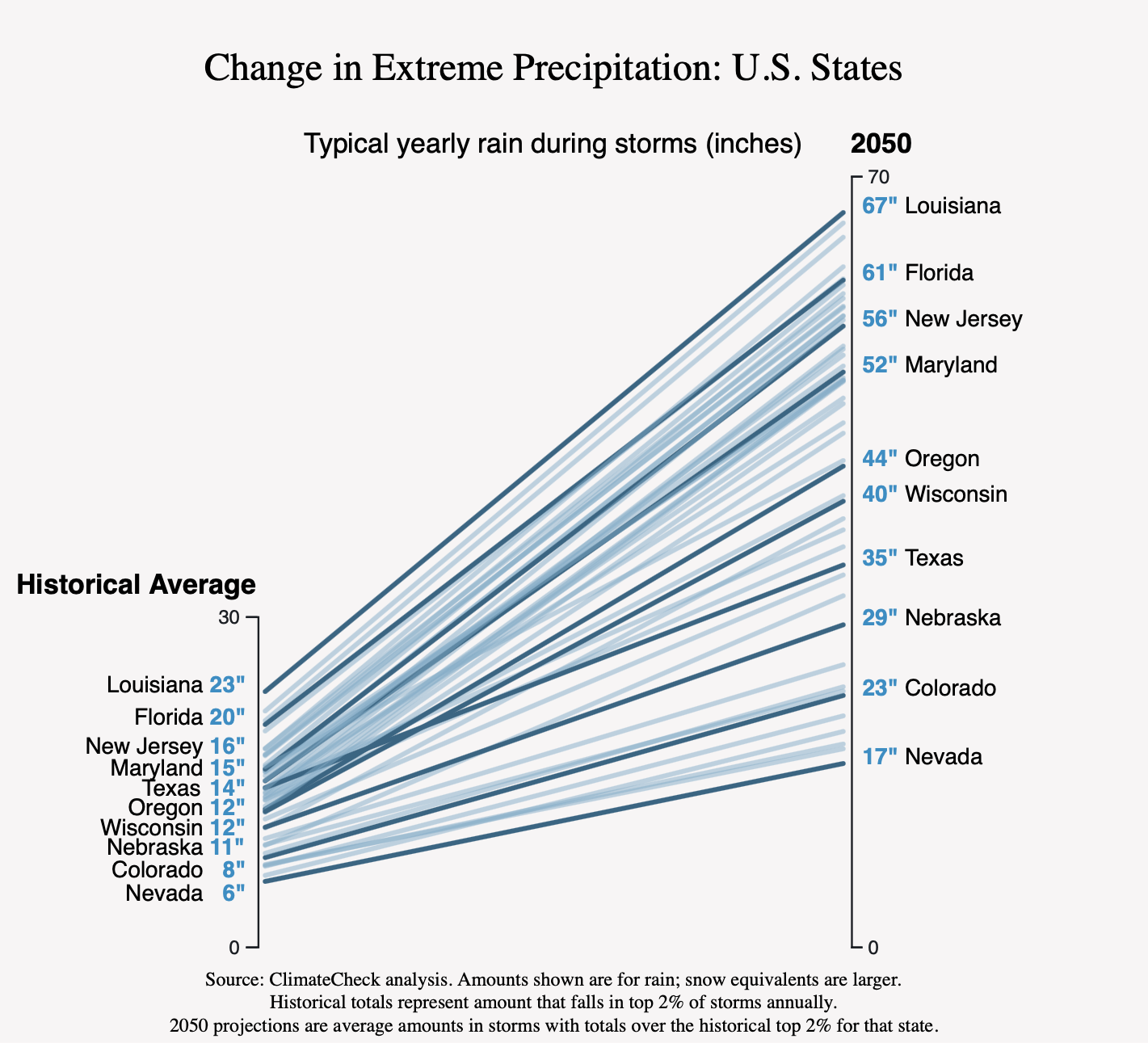Severe Weather and Storm Risk
A storm is a severe disturbance of the atmosphere. Storms are usually accompanied by some combination of wind, rain, snow, sleet, lightning, thunder, and hail. These weather events can have vastly different levels of severity and longevity.
Types of Severe Weather
Because the United States encompasses such a large and diverse geographical region, there are many different types of storms that regularly take place within its borders. Here is a breakdown of some of the most common storms that occur in the United States:
Hurricanes
A hurricane is a rotating cyclone-shaped low-pressure system that forms over tropical or subtropical waters. In order for a tropical storm to be designated as a hurricane, it must have sustained winds of at least 74 miles per hour. Unlike many other types of storms, they do not have fronts, which are boundaries that sit between two air masses with different densities. The powerful winds of hurricanes are highly destructive to property and the storm’s accompanying heavy rainfalls and storm surges can cause severe flooding.
Most hurricanes occur between June 1st and November 30th. This period is known as “hurricane season.” The vast majority of hurricanes occur in the Atlantic basin, which includes the Gulf of Mexico, the Caribbean Sea, and the Atlantic Ocean.

Tropical Storms
Tropical storms are cyclone-shaped storm systems which occur in tropical regions; they are classified by wind speeds from 39 to 73 miles per hour, not to exceed the minimum requirement for hurricanes. They are very similar to hurricanes and occur in many of the same locations, but by definition they are not as severe. Other conditions required for tropical storms to occur are sea temperatures of at least 27 degrees Celsius and the presence of converging winds near the ocean surface that force the air to rise and create storm clouds.
Derecho
Derechos are thunderstorms with high winds which travel in straight lines, unlike tropical cyclones and hurricanes. Derechos primarily occur in warm weather. This means in the northern hemisphere, they mostly occur in June, July, August, and September, and in the southern hemisphere, they primarily occur in February, March, and April.
Winter Storms: Blizzard and Ice
Winter storms primarily occur in colder weather. In order to qualify as a blizzard, a winter storm must have winds of at least 35 miles per hour with snow that reduces visibility to a quarter-mile or less for at least three hours. Blizzards are very common in the northern states in the U.S. such as Maine, Vermont, New Hampshire, Idaho, Michigan, Wisconsin, and Massachusetts.
Although blizzards may not have as strong of winds as hurricanes, heavy snow can cause roof cave ins and water damage. Blizzards also create dangerous driving conditions which result in many car accidents every year.
Hail
Hail is a form of precipitation that is made up of solid ice. It forms in the updrafts of thunderstorms when rain is carried upward into extremely cold areas of the atmosphere. Hailstones then grow when other droplets collide with and freeze to the surface of the hailstone. Most hailstones are between 5 mm and 15 cm and can be round or jagged. Larger hailstones can cause significant brunt force impact damage on property, people and livestock.
Tornadoes
A tornado is a rapidly rotating column of air, usually in a funnel shape, that is touching the ground and reaching up to overhead clouds. Winds inside tornadoes can reach dangerous and deadly speeds of over 300 miles per hour. Tornadoes are also called twisters, cyclones and sometimes whirlwinds. Tornadoes can occur in much of the United States, but the most severe and frequent storms are in the central US, including “Tornado Alley” which encompasses northern Texas, Oklahoma, Kansas, Nebraska, Iowa, and South Dakota.
What are the Effects of Severe Weather?
Tornadoes, hailstorms, hurricanes, derechos, and tropical storms cause hundreds of millions or billions of dollars in property damage every year nationally. Tornadoes cause the most fatalities out of any storm and hurricanes cause the most severe property damage. They damage homes and property, crops and livestock, and cause other severe disruption. Every year, around the world, 14 million people become homeless due to severe weather and related flooding.
Which Areas are Most Affected by Severe Weather?
The risk to your home of property damage caused by storms heavily depends on where your home is located. Here are the geographic regions with some of the biggest storm risks associated with them:
- Northern: blizzards
- Southeastern: hurricanes and tropical storms
- Midwest: tornadoes
How is Climate Change Increasing Storm Risk in the U.S.?
Climate Change is increasing the severity of storms like hurricanes, tropical cyclones, and derechos which all thrive in a warmer atmosphere with warmer ocean surface temperatures. Increased levels of water vapor evaporation into the atmosphere caused by warming temperatures becomes more fuel for powerful storms to develop. The amount of tropical cyclones that occur each year has consistently remained between 65-90 since 1985. However, the percent of these storms that reach the highest classes of severity is increasing.

Storm Risk Mitigation Options for Property Owners
If your home is directly in the path of a strong tornado or hurricane, then unless it is made out of stone or concrete, it is likely that it will experience at least some significant damage. The best option is to build and live within homes that are far away from the areas that are most frequently hit with severe weather. In order to best protect your property, here are some mitigation options that you can employ:
Create preparedness plans and be aware of your risk.
- Visit this FEMA site for localized information about disaster and emergency management in your community such as news, disaster alerts, and emergency resources
- Make a plan with your family incorporating actions specific to the type of natural disaster your area is prone to as well as: safe places to meet and paths of escape, preparedness actions in the event of storms, and emergency forms of communication
- Gather an emergency supply kit and keep it easily accessible in case of injury
Upgrade your home to increase storm resistance.
- Build with round or perfect-square designs to resist wind damage or build with a solid concrete foundation
- Consider upgrading your window and roofing to more durable materials
- Explore added features such as securely strapping roofs to the foundation or boarding up windows and doors in advance of storms
Consider your insurance options.
- Check with your insurance agent to check that you have the best coverage to protect yourself from storm risk
For other damage which can accompany storms such as flooding, see this page for flood mitigation options.
Conclusion
No area in the U.S. is completely safe from storm risks. As storms increase in severity due to climate change, being aware of your localized weather risks and the options you have to mitigate damage at every stage in your home ownership is increasingly important.
See the ClimateCheck property report for more information on your individual risks to storm damage.